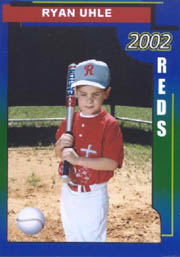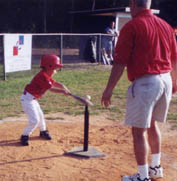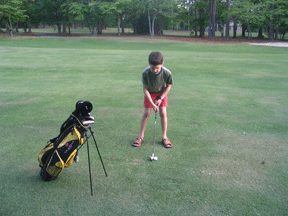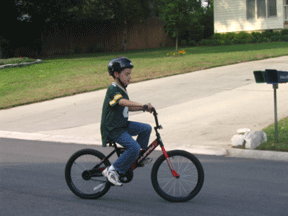The past few weeks have been very busy I haven't had time to post. Two events happened this weekend that I don't ever want to experience again.
My son had a high school football game out of town Friday night. After enjoying out with family and friends we headed to the field. I was more worried about rain than getting around that I brought my umbrella instead of my cane. The game was at a large public stadium with a security station like an airport. I was the last one to go through the metal detector. Everyone with me had gone ahead. As I was walking I could see that the field was designed in the bottom of the hill. I took about four steps then noticed there was a "slop" ahead. At that point I thought the two metal bands in the concrete indicated steps. I stepped forward and before I knew it I was tumbling downward. The metal band was in the middle of the two steps instead of at the end. My family and the staff ran to help me "up" on my feet. My husband said "give her a few a few minutes". He was right I was still in shock. At times I feel self-conscious of having to carry a cane since I can see some out of the left eye but this is the last time I will leave it at home when I'm somewhere I haven't been before. After a few minutes I was ready to watch the game. My son's team won the game and he scored 4 point as kicker.
Saturday we were at our local soccer tournament. I took my cane this time. I did need it out at the field because we had to park by the woods. Sunday we were at soccer again. I also had my cane. We were watching the first game from the side line. It was almost half time. I had a hat on to protect my eyes from the sun because the were burning from all the sun and dust from the day before. I even used an ice pack the night before. As I was watching the game I saw something to my right / blind side. What I heard next was swoosh, pop and crunch as the soccer ball hit my face, eye and nose. My sweet husband came to my rescue again. He ran to the first aid tent for a bag of ice. Someone handed me some Advil. The rest of the game I sat with a bag of ice on my face. The poor boy that kick the ball did apologize to me. For the next game and the rest of the season I'll be sitting at least six feet away from the side line.
My son had a high school football game out of town Friday night. After enjoying out with family and friends we headed to the field. I was more worried about rain than getting around that I brought my umbrella instead of my cane. The game was at a large public stadium with a security station like an airport. I was the last one to go through the metal detector. Everyone with me had gone ahead. As I was walking I could see that the field was designed in the bottom of the hill. I took about four steps then noticed there was a "slop" ahead. At that point I thought the two metal bands in the concrete indicated steps. I stepped forward and before I knew it I was tumbling downward. The metal band was in the middle of the two steps instead of at the end. My family and the staff ran to help me "up" on my feet. My husband said "give her a few a few minutes". He was right I was still in shock. At times I feel self-conscious of having to carry a cane since I can see some out of the left eye but this is the last time I will leave it at home when I'm somewhere I haven't been before. After a few minutes I was ready to watch the game. My son's team won the game and he scored 4 point as kicker.
Saturday we were at our local soccer tournament. I took my cane this time. I did need it out at the field because we had to park by the woods. Sunday we were at soccer again. I also had my cane. We were watching the first game from the side line. It was almost half time. I had a hat on to protect my eyes from the sun because the were burning from all the sun and dust from the day before. I even used an ice pack the night before. As I was watching the game I saw something to my right / blind side. What I heard next was swoosh, pop and crunch as the soccer ball hit my face, eye and nose. My sweet husband came to my rescue again. He ran to the first aid tent for a bag of ice. Someone handed me some Advil. The rest of the game I sat with a bag of ice on my face. The poor boy that kick the ball did apologize to me. For the next game and the rest of the season I'll be sitting at least six feet away from the side line.
What an exciting weekend.
 In short right, a small boy named Ryan Uhle pounds his glove and places himself in good position. Nearby, his dad Mike soaks it all in proudly, smiling and laughing with uncomplicated delight. Mike Uhle was a multi-sport athlete at Aiken High as a teenager, but baseball was always his thing. And years later, when his wife Keisha gave birth to their first child, Mike held Ryan in his arms and could envision a future for his son a lot like his own.
In short right, a small boy named Ryan Uhle pounds his glove and places himself in good position. Nearby, his dad Mike soaks it all in proudly, smiling and laughing with uncomplicated delight. Mike Uhle was a multi-sport athlete at Aiken High as a teenager, but baseball was always his thing. And years later, when his wife Keisha gave birth to their first child, Mike held Ryan in his arms and could envision a future for his son a lot like his own. Baseball--or at this age, T-ball--was seemingly out of the question, but Wendy Scolamiero, the Oakwood-Windsor physical education teacher, didn’t think so. A close friend of Keisha and Mike, Scolamiero knew they wanted to find as many regular childhood activities for Ryan as possible. Her own son, Clark, played T-ball at Gregg Park for a volunteer coach named Mike Conaway. Last year Scolamiero told him about Ryan and asked if the youngster could join the team this spring.
Baseball--or at this age, T-ball--was seemingly out of the question, but Wendy Scolamiero, the Oakwood-Windsor physical education teacher, didn’t think so. A close friend of Keisha and Mike, Scolamiero knew they wanted to find as many regular childhood activities for Ryan as possible. Her own son, Clark, played T-ball at Gregg Park for a volunteer coach named Mike Conaway. Last year Scolamiero told him about Ryan and asked if the youngster could join the team this spring.  “The coach is telling the batter what to do,” Mike tells Ryan. “He pitched it and the batter missed it, and he’ll hit off the tee this time. Show me you’re getting ready. Hey, that’s a good job, buddy.” The batter sends a slow roller between short and third and reaches first safely. Ryan leans toward his dad and says slyly, “I caught a ball.” Mike just grins. “Oh get out of here.”
“The coach is telling the batter what to do,” Mike tells Ryan. “He pitched it and the batter missed it, and he’ll hit off the tee this time. Show me you’re getting ready. Hey, that’s a good job, buddy.” The batter sends a slow roller between short and third and reaches first safely. Ryan leans toward his dad and says slyly, “I caught a ball.” Mike just grins. “Oh get out of here.” It’s the second and final inning and Ryan’s team comes to bat. He waits patiently for his turn, listening to the chatter of talkative teammates and the shouts and applause of family and friends. He has his own gallery--Keisha and his grandparents, two-year-old sister Natalie and new brother Jared, not yet three-months-old. Finally, it’s his turn. Mike hands a bat to Ryan, who eagerly walks to the plate. Mike sets the tee with the ball and positions Ryan, giving him an idea of the ball’s location and its height. Moments later, Mike barely has time to take a step back when Ryan swings. He connects! A hard grounder sails toward short and father and son take off in tandem, Mike running backwards and calling out to Ryan, who races toward him and reaches first safely.
It’s the second and final inning and Ryan’s team comes to bat. He waits patiently for his turn, listening to the chatter of talkative teammates and the shouts and applause of family and friends. He has his own gallery--Keisha and his grandparents, two-year-old sister Natalie and new brother Jared, not yet three-months-old. Finally, it’s his turn. Mike hands a bat to Ryan, who eagerly walks to the plate. Mike sets the tee with the ball and positions Ryan, giving him an idea of the ball’s location and its height. Moments later, Mike barely has time to take a step back when Ryan swings. He connects! A hard grounder sails toward short and father and son take off in tandem, Mike running backwards and calling out to Ryan, who races toward him and reaches first safely.


 Looking for a few good mutts
Looking for a few good mutts 


 Homegrown helper
Homegrown helper 

